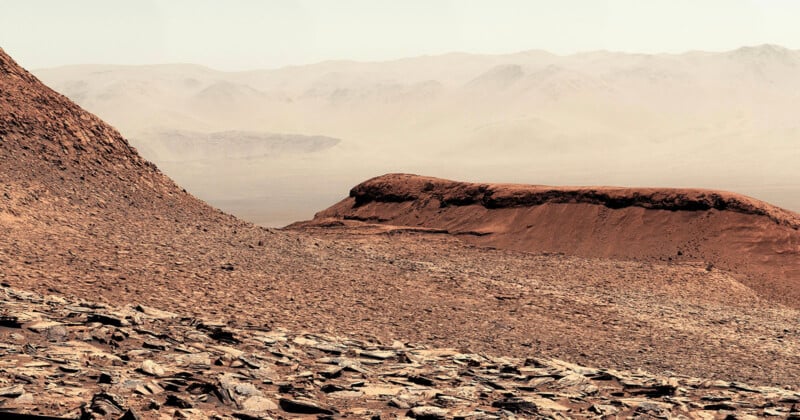Sit Back and Enjoy NASA’s Epic Landscape Photo of Mars

160 years ago pioneering photographers were among the first to capture the landscapes of the Sierra Nevada and Yosemite. One and a half centuries later, a robot on Mars is recording the first-ever views of Martian landscapes that bear a resemblance to those found in the southwestern United States.
The NASA Curiosity Mars rover recently captured a stunning panorama of the Gale Crater on Mars from its vantage point on Mount Sharp, a terrain that was created when an asteroid collided with the Red Planet billions of years ago.
The “mountains” that appear in the background of the image are not mountains at all, they are in fact the crater’s rim.
30 seconds on Mars. Enjoy this recent look, courtesy of @MarsCuriosity, at the view from the slopes of Mt. Sharp, with the distant rim of Gale Crater on the horizon. You can imagine the quiet, thin wind, or maybe even the waves of a long-gone lake lapping an ancient shore. pic.twitter.com/XEj3ZKgqc7
— NASA Mars (@NASAMars) May 20, 2025
“The color in these images has been adjusted to match the lighting conditions as the human eye would see them on Earth,” NASA explains.
The image is a panoramic taken by Curiosity’s Mastcam instrument. NASA put out an incredible 30-second video that pans through the image allowing the viewer time to take in the amazing detail of the scene.
“30 seconds on Mars. Enjoy this recent look, courtesy of Mars Curiosity, at the view from the slopes of Mt. Sharp, with the distant rim of Gale Crater on the horizon,” NASA writes on X (formerly Twitter). “You can imagine the quiet, thin wind, or maybe even the waves of a long-gone lake lapping an ancient shore.”

Mashable reports that Mount Sharp is full of salty minerals and scientists believe that they were left behind by streams and ponds before all of the water of Mars dried up billions of years ago. By studying the area, scientists hope to discover why the Red Planet turned from being a watery world like Earth to a frozen desert.
Image credits: NASA/JPL-Caltech/MSSS